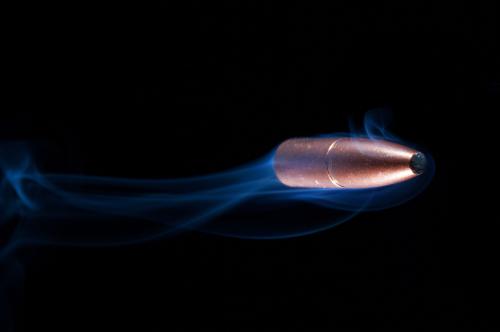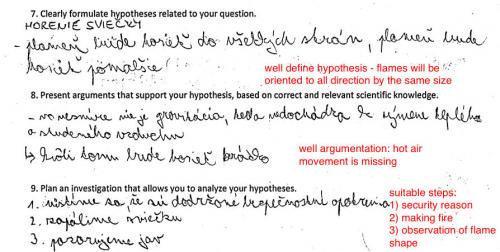The Up There... how is it? SAILS unit aids students to learn about the concept of gravity and offers an opportunity to learn about the International Space Station (ISS); understanding its impact on the scientific, technological development and society. In this unit, students are encouraged to develop interest and curiosity about space exploration. While recommended for upper level physics students, the activities could be explored with different disciplinary areas, namely chemistry, biology and geology, or adapted for implementation at lower second level.
The four activities serve to consolidate prior knowledge, before introducing the concept of microgravity and how it might impact on everyday activities. Students plan an experiment that can be conducted in a microgravity environment and end the lesson with a reflection on what has been learned and achieved. These activities can be carried out in a sequence of lessons, which would require about three lesson periods (ideally one 45 min and one 90 min lesson). Through this activity series, students are provided the opportunity to develop inquiry skills such as planning Investigations, developing hypotheses and working collaboratively, as well as progressing their scientific literacy and reasoning capabilities. Assessment opportunities include student observation, group discussion or presentation and evaluation of student artefacts.
This unit was trialled in Portugal, Slovakia and Sweden, with students aged 13-16 (8 classes in total, mixed ability and gender). The teaching approach in all case studies was that of an open/guided inquiry. Inquiry skills assessed were planning investigations (Portugal), reasoning (observation skills, Slovakia) and forming coherent arguments (Sweden).
- Gravity
- The study of gravity in the International Space Station
- Effect of microgravity on everyday activities
- Impact of scientific and technological development in society
- Lower
- Upper
- Planning investigations
- Developing hypotheses
- Forming coherent arguments
- Working collaboratively
- Scientific reasoning
- Classroom dialogue
- Teacher observation
- Worksheets
- Student devised materials
The unit Up there... how is it? was set up under the 1st SAILS Portuguese workshop for teachers: "Why is there so much talk about INQUIRY across Europe? A proposal to work with the science curriculum in the classroom" (May 2013). It was proposed by Vanessa de Andrade and adapted to the SAILS unit structure. The unit develops in four parts (activities A-D); Activity A is a preliminary activity to aid the students' learning about the concept of gravity, while Activity B introduces the activities of the ISS. Activity C allows the students to understand the impact of the ISS in scientific, technological and societal development, and apply their prior learning in a new situation. In the final activity, each student reflects on what he has learned in carrying out the activities, seeking to develop interest and curiosity about space exploration.
Within the suggested learning and assessment sequence specific inquiry skills are emphasised for development and assessment. Note, however, that throughout the activities students will have opportunities to practice a range of inquiry skills not identified in the description. It is the teachers' choice to select what inquiry skills they want to address depending on the level of their students. Similarly teachers can choose whether or not to complete all of the activities described or to select a specific one based on the context of their students and time demands of their curriculum.
This unit provides an excellent opportunity for formative assessment that can be focused on the group written work, the research plan, the communication to the class, collaborative attitudes and students' individual reflections. An assessment instrument, which details some assessment criteria for several inquiry skills is provided.
During Activity C, students will apply the learned concepts into a new situation. They will be asked to think about and therefore formulate a question they would like to investigate in a microgravity environment. They must raise a hypothesis, and plan an investigation in order to answer their research question. The main goal isn’t to actually develop the activities on the research plan built by the students (since that would not be possible) but to raise a rich discussion on the conclusions one might reach. The best research plans can be submitted to NASA (this institution receives and selects activities submitted by schools, performing the best ones on board of the ISS).
Below you can find the full inquiry and assessment unit for download, as well as an archive with classroom materials, including student worksheets and assessment tools for teachers to be used during the activities if available.
Unit booklet Classroom materials| Concept focus |
Gravity
|
| Inquiry skills focus |
Working collaboratively
|
| Scientific literacy |
Understand how microgravity impacts everyday activities
|
| Assessment methods |
Classroom dialogue
Worksheets
|
| Concept focus |
Gravity
Everyday life on the ISS
|
| Inquiry skills focus |
Working collaboratively
|
| Scientific literacy |
Understand how microgravity impacts everyday activities
|
| Assessment methods |
Classroom dialogue
Worksheets
|
| Concept focus |
Gravity
Working in a microgravity environment
|
| Inquiry skills focus |
Planning investigations
Developing hypotheses
Working collaboratively
|
| Scientific literacy |
Understand how microgravity impacts everyday activities
|
| Assessment methods |
Classroom dialogue
Worksheets
Student devised materials
|
| Concept focus |
Gravity
Working in a microgravity environment
|
| Inquiry skills focus |
Planning investigations
Developing hypotheses
Working collaboratively
|
| Scientific literacy |
Understand how microgravity impacts everyday activities
|
| Assessment methods |
Classroom dialogue
Worksheets
|
This unit was trialled in three countries, producing three case studies of its implementation – CS1 Portugal, CS2 Slovakia and CS3 Sweden. In all three case studies, teachers and students had previous experience with inquiry but not all of them have prior knowledge about microgravity (CS3 Sweden).
The ages of the students involved in the case studies were 15-16 years old for CS1 Portugal and CS2 Slovakia, and 13/15 years old for CS3 Sweden. The students in each class were mixed ability and mixed gender. In CS1 Portugal, the unit was implemented in two 11th grade classes (32 students in total), where each class worked in groups of 3-4 members, over two 45 minutes classes plus a double lesson period of 90 minutes. CS2 Slovakia was implemented with upper second level students (1st class of Gymnasium), consisting of 30 students working in six groups, over three 45-minute lesson periods. CS3 Sweden comprises five classes: four grade 7 classes and one grade 8 class. The schools were primary preschool to grade 9 schools and one grade 6-9 school. The students worked in groups of 3-4 students.
In the case studies, different skills were identified for assessment. CS1 Portugal focused on planning investigations and CS3 Sweden on forming coherent arguments, which were assessed through evaluation of students' written reports. In CS2 Slovakia, the teacher assessed several inquiry skills – planning investigations, developing hypotheses and scientific reasoning capabilities – using formative assessment and a three-level rubric. In addition, students' skill in working collaboratively was assessed through teacher observation.
In all cases unit was implemented as an open/guided inquiry, as anticipated in the unit description. It was guided in the sense that the teacher posed the initial question but there were open inquiry opportunities in that students had freedom in addressing the question.
This unit has four activities, each of which addresses the concept of gravity and life on the ISS to form the basis of the inquiry. The activities focus on ensuring students understand the concept of gravity (activities A & B), allowing them to devise an experiment to be carried out on the ISS (in a microgravity environment, Activity C) and reflecting on new knowledge and skills (Activity D). The three case studies utilised text (Activity A) and video (Activity B) to focus the students on the topic of gravity and space. The students in all the case studies worked in groups throughout the lessons.
While the case studies highlighted the development of several inquiry skills, assessment was only described for a few of these skills (Table 3). For some skills, the assessment was carried out after class and was based on a written artefact produced in class. In other situations, formative assessment guided the student learning during the class. CS1 Portugal focused on planning investigations and CS3 Sweden on forming coherent arguments, which were assessed through evaluation of students' written reports. In CS2 Slovakia, the teacher assessed several inquiry skills – planning investigations, developing hypotheses, working collaboratively and scientific reasoning capabilities, through a combination of evaluation of artefacts and teacher observation in-class.
Below you can find the full inquiry and assessment unit for download (excluding the case studies), as well as an archive containing all the case studies.
Unit booklet Case studies| Concept focus |
The effects of microgravity
|
| Activities implemented |
Up There… how is it?
Let’s explore…
Going further…
Did you know…
|
| Inquiry skills assessed |
Planning investigations
|
| Assessment methods |
Presentations
|
| Level |
Upper
|
| Age |
15-16
|
| Prior experience with inquiry |
Some experience
|
| Concept focus |
The effects of microgravity
|
| Activities implemented |
Up There… how is it?
Let’s explore…
Going further…
Did you know…
|
| Inquiry skills assessed |
Planning investigations
Developing hypotheses
Working collaboratively
|
| Scientific reasoning |
Choosing appropriate experiment for evaluation in microgravity, able to explain choice scientifically
|
| Assessment methods |
Classroom dialogue
Teacher observation
Worksheets
|
| Level |
Upper
|
| Age |
15-16
|
| Prior experience with inquiry |
Some experience
|
| Concept focus |
The effects of microgravity
|
| Activities implemented |
Up There… how is it?
Let’s explore…
Did you know…
|
| Inquiry skills assessed |
Forming coherent arguments
|
| Scientific reasoning |
Argumentation
|
| Assessment methods |
Classroom dialogue
Presentations
|
| Level |
Lower
|
| Age |
13-15
|
| Prior experience with inquiry |
Some experience
|



